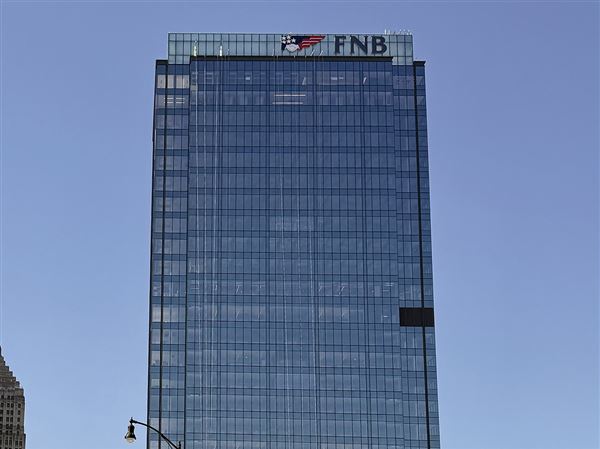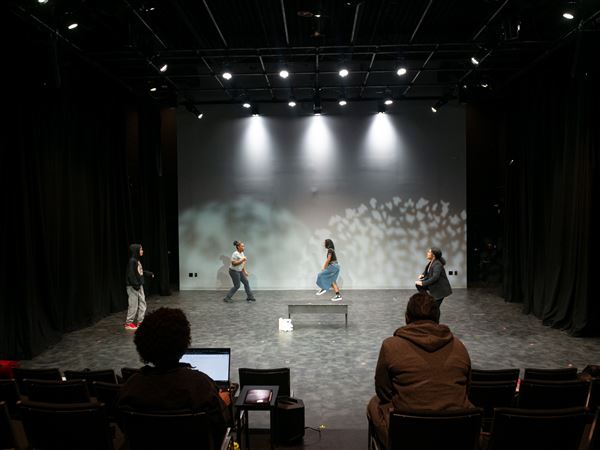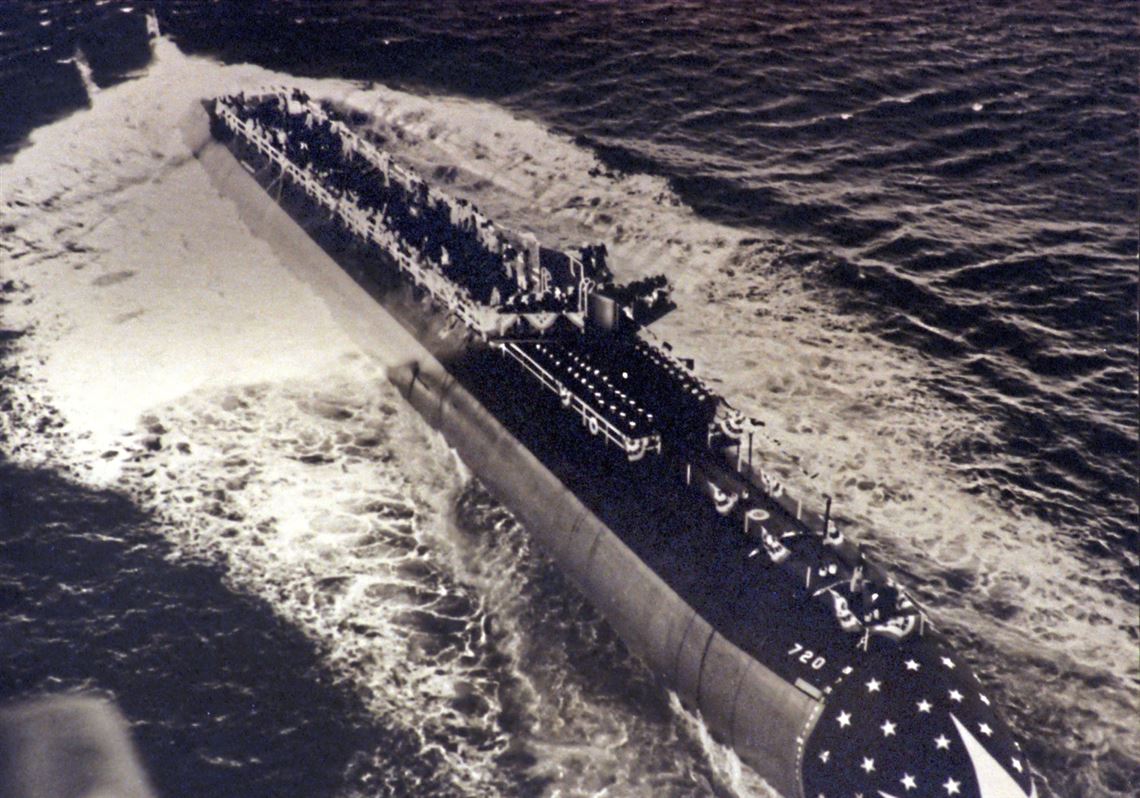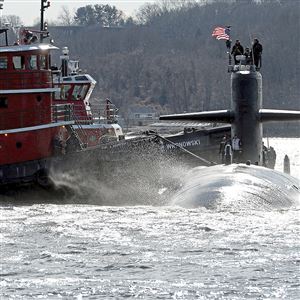Three other Navy ships have been named for the City of Pittsburgh:
▪ The first USS Pittsburgh, sometimes spelled Pittsburg, was an ironclad riverboat during the Civil War. Commissioned in 1862, it saw action on the Mississippi River throughout the war. The ship had a crew of 251, one of whom, gun captain John Woon, was awarded the Medal of Honor for actions at the Battle of Grand Gulf on the Mississippi in 1863. The ship was sold for scrap after the war.
▪ The second USS Pittsburgh was originally the USS Pennsylvania, built in Philadelphia and launched in 1903. A cruiser with a crew of over 900, the ship is known for the first landing of an aircraft on a ship when, in 1911, Eugene Ely landed a biplane on a wooden afterdeck. That landing is considered the beginning of naval aviation, leading eventually to today's massive aircraft carriers. The Pennsylvania was renamed Pittsburgh in 1912 to free up the state name for a new battleship. The Pittsburgh served in World War I and beyond. It was decommissioned in 1931 and sold for scrap.
▪ The third USS Pittsburgh, a Baltimore-class cruiser with a crew of 1,142, saw action in World War II and is probably best known for having its entire bow sheered off during a typhoon in 1945. It was launched in 1944 in Massachusetts, when the wife of Pittsburgh's mayor broke the ceremonial champagne bottle across the bow.
The ship saw combat at Iwo Jima and later went to the rescue of the USS Franklin, a carrier badly damaged by enemy bombers off the Japanese coast. The Franklin lost 724 killed and 265 wounded, although some estimates are higher. The Pittsburgh rescued 34 men and then towed the carrier to safety while fighting off more Japanese attacks. The ship later protected carriers off Okinawa and then, in June 1945, found itself battling a historic typhoon with waves up to 100 feet that would damage many U.S. ships.
The front of the ship broke off in the storm. The crew shored up the bow with wood while the captain reversed engines to keep the sea from pounding the makeshift repair. The ship fought the storm for seven hours. When the typhoon finally dissipated, the cruiser limped to Guam. The missing 100-foot section of the bow, nicknamed "McKeesport," was salvaged. The Pittsburgh sat out the rest of the war under repair and was eventually decommissioned in 1947. The ship was recommissioned in 1951 during the Korean War, decommissioned again in 1956 and sat in reserve until it was sold for scrap in 1974. One of its anchors is on display at the Pittsburgh Children's Museum.
First Published: March 10, 2019, 4:42 a.m.

















